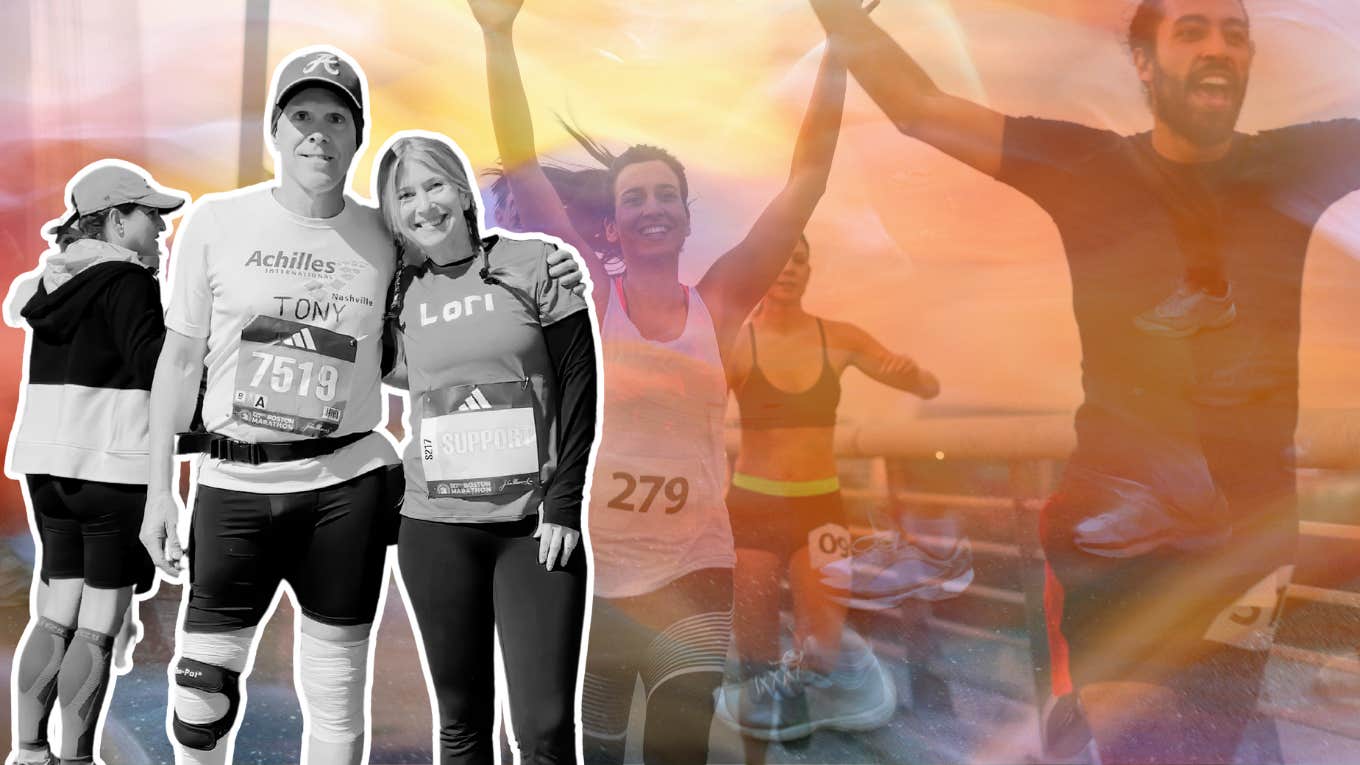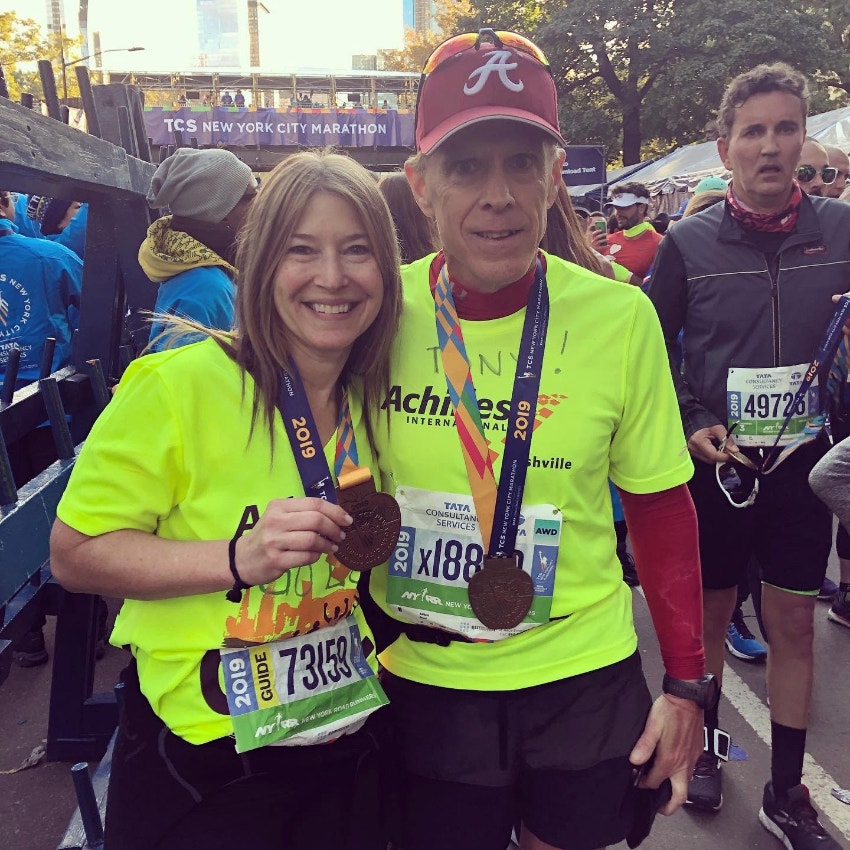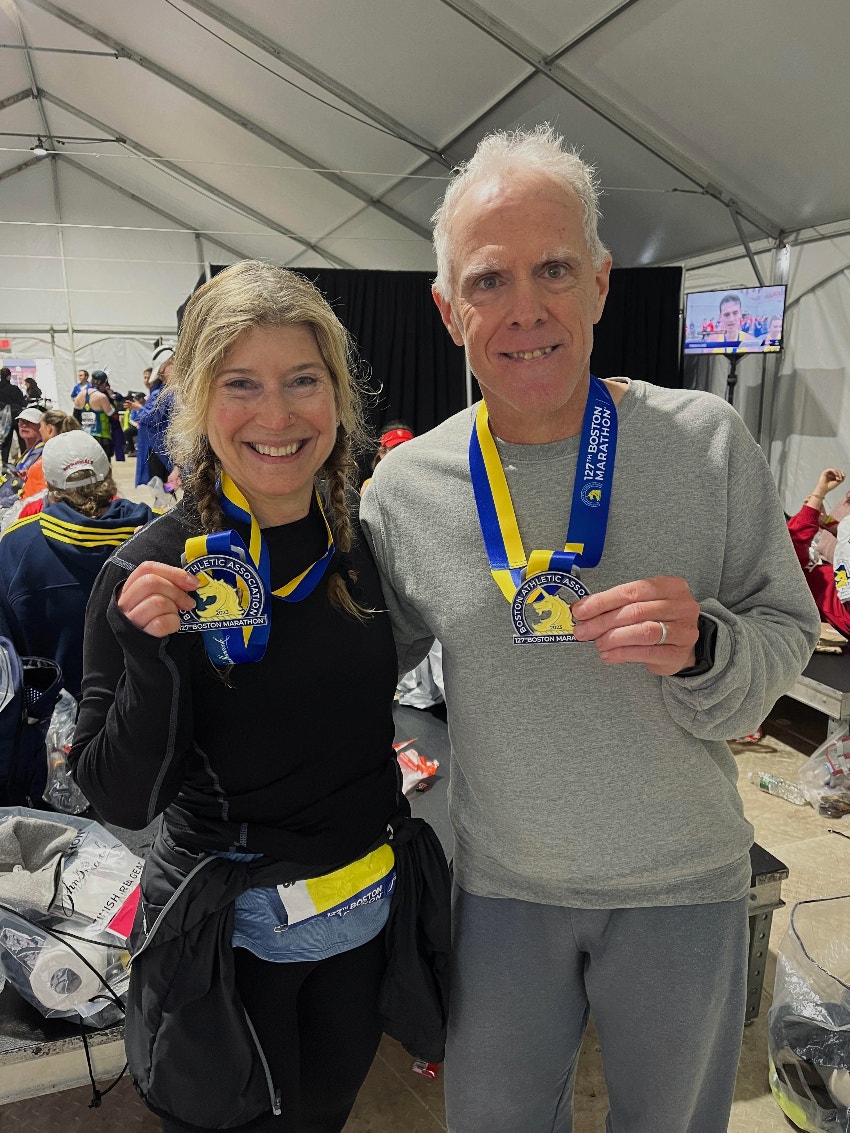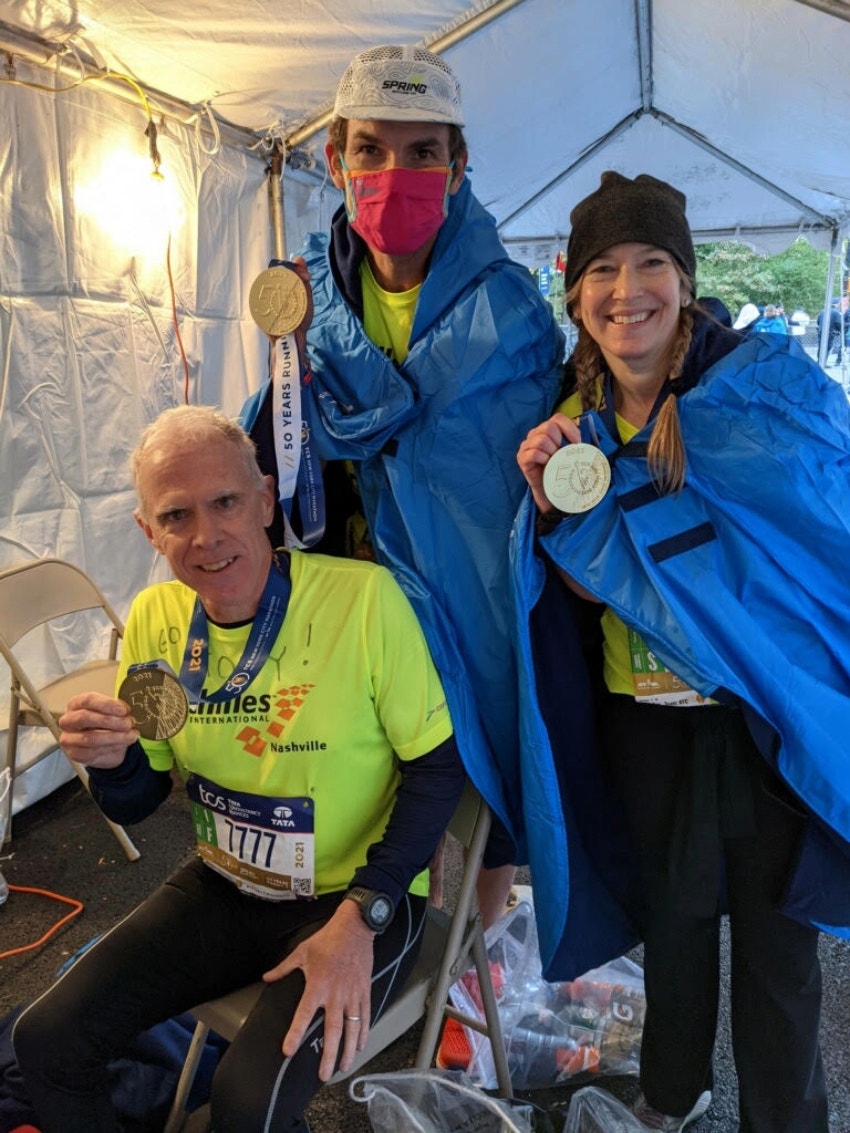Running As A Marathon Guide For People With Disabilities Made Me A Better Human
Running 20+ marathons as a guide means sometimes you get more than you give.
 Photo Courtesy of Author, poba, vgajic | Canva
Photo Courtesy of Author, poba, vgajic | Canva At mile 20 of the famed Boston Marathon, I realized that I was failing miserably at my job. It was my responsibility to guide Tony, a member of Achilles International, but I was quite literally trudging along Heartbreak Hill as if my feet were stuck in the mud. I was clearly very mistaken — it was not one singular hill but rather four freaking hills.
This was my 24th marathon in 28 years — I should have been better prepared. But the reality was, that I was not, and I was slowing him down.
To rewind a bit to how I ended up here, I was not a sporty kid. When I was in my early twenties, I worked for the PR agency that represented the New York Road Runners (NYRR) and my job on marathon day was to coordinate the winners with the press. I watched the race in the Finisher’s Tent with screens that took up entire walls and for the first time really observed the runners, with all their different facets. They weren’t just traditional young, perky-looking track runners. There were people of all ages, shapes, and sizes, collectively moving towards the same goal.
I was inspired and awed by all these tens of thousands of ordinary-looking people running 26.2 miles. I remember thinking, I bet if I dedicated myself, I could do it.
Close to three decades later, I’ve completed 24 marathons — 23 of them being The New York City Marathon. For me, running marathons is not about crossing the finish line at a certain time, but about training, having a goal, and the meditative and calming nature of the repetitive pounding on the sidewalk.
After completing the NYC Marathon multiple times, I wanted to make that spectacular day in NYC when everyone comes out to support the runners even more meaningful — not only for myself but for others.
I remembered that day in the Finisher’s Tent and recalled seeing the distinct vivid yellow shirts with the Achilles International logo emblazoned across the front. The organization’s mission is to break down barriers to race start lines and empower the disability community to cross the finish line.
I reached out to the organization and registered as a guide and the rest is history. So for the majority of my marathons, I’ve run as a guide with Achilles International. I’ve been paired with runners who were blind, wore prosthetics, and had other physical disabilities that hindered them from being able to easily run.
Tony Grossi was born with a congenital foot defect in which one foot is significantly smaller than the other and requires a brace and a custom shoe. As an Achilles volunteer guide, I helped him navigate the course with water stops, alerted nearby runners to allow him to pass, steered him clear of possible obstacles on the road, and was his emotional support person if necessary.

At least that is what I had done for him six previous times for the New York City Marathon. Usually, we run well together and I can easily match his marathon pace.
Our previous run was the November 2022 NYC Marathon, so I didn’t have to think twice when he invited me to be his guide at the most renowned marathon in the world, the Boston Marathon. I was honored.
But flash forward to mile 20: I was drenched and miserable. I was literally wearing a garbage bag in a futile attempt to keep dry — I didn’t even punch holes out for my arms hoping it would somehow insulate me. I tried to mentally coax my legs, knees, and feet to accelerate faster but I sensed that Tony was curbing his pace to match my sloth-like shuffle.
Would Tony be okay maneuvering the last six miles on his own? His stride was strong and he wasn’t persistently stopping and starting as he often did. Normally, I grab cups of water and Gatorade for him, but at the last few water stations, I actually accepted water from him. He was on his game today, whereas I was certainly not.
"Tony, how would you feel going on without me?" I asked, feeling ashamed and hating myself for even getting to this point, but I just could not propel myself any faster up those notorious hills. Heartbreak turned out to be a good name for those hills because my heart was breaking that I was letting Tony down.
"I’m ok, but I’d rather not leave you." My misery was obvious. "But it’s ok … I’ll wait for you at the finish line," he said with concern (for me not himself).
Perhaps I took our past runs and all my years of training for granted. It’s possible I didn’t research this new course and just assumed I could wing it. Or I became complacent, thinking that after completing so many marathons, I was somehow superior to the basic training principles.
My social media post after the Boston Marathon says it all:
Yesterday was another milestone. A humbling one. I take running as an Achilles guide seriously and am grateful for the opportunity to run with amazing people like Tony. The Boston Marathon hills (I’d prefer to rename them mountains) and the pelting cold rain did me in. As you can see from the photo showing my medal, I did complete the marathon, but … I feel like I did not do my job. After mile 20, I knew I was holding Tony back and insisted that he go on without me. Gentleman that he is, he was really reluctant to leave me behind.
But, despite having run more than 20 marathons, I learned some lessons that will not be surprising:
1. Properly train (Three weeks vacationing and not running does not equal proper training).
2. On marathon day, never try something new. I showcased a new sneaker brand after years of trusting another brand.
3. Don’t run while jet-lagged (I had returned home from an Australian vacation only a few days ago).
When I finally crossed the finish line, there Tony was waiting for me, sporting his shiny Boston Finisher Medal around his neck! I didn’t have that sense of exhilaration. I chided myself that I let him and therefore myself down. I was dejected and a bit ashamed that Tony had to wait for me. I was supposed to be there to support him, not the reverse.

A few days after the race, Tony called. I apologized to him, and he cut me off and said, "Look, you support me, but we are now a team, and I support you, too." And then he asked me to guide him again… for this coming NYC Marathon in November.
I now realize I was looking at this scenario incorrectly. Tony crossing that finish line on his own before me actually makes me so proud of us. I’ve guided him to the finish line many times. This time he helped guide me. And that's what teams do — they help each other succeed.
I did not fail as a guide. In fact, I won. Correction, we both did.

All photos by author
Lori Gaon embraces diverse roles as a wife, mom, dog mom, and serial entrepreneur. She occasionally pens reflective essays, finds solace in knitting, and runs marathons.
